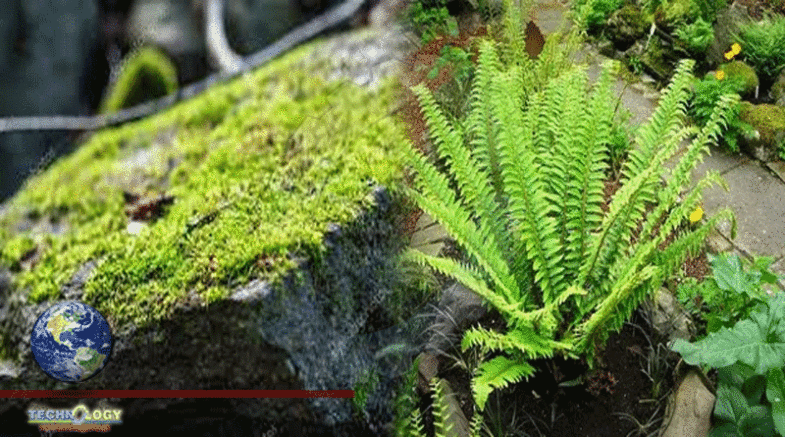Spores found in 480 million-year-old rock bring the fossil record in line with molecular estimates of when plants first adapted to life on land.

A variety of fossilized plant spores have been found in rocks from Western Australia that date from the early Ordovician era—approximately 480 million years ago. According to a paper published in Science today (12 August), some of the spores may have belonged to early forms of land-dwelling algae, from which other land plants are thought to have originated.
“I think [the paper] is interesting for a few reasons,” says paleobiologist Philip Donoghue of the University of Bristol who was not involved with the study. “It extends the fossil record of [early land plants] by something like 20 million years. . . . Also, potentially [the fossils] provide a sort of intermediate between the Cambrian record and the later Ordovician records.”
Plants that live on land are thought to have evolved from algae—typically aquatic plants lacking stems, roots, leaves, and vascular systems. But when and how plants first adapted to life on land is a matter of debate. The first macrofossil evidence of land plants is in the form of 425 million-year-old specimens of Cooksonia, a primitive vascular plant. However, molecular clock estimates—which are based on, among other things, genetic mutation rates—have suggested an origin for land plants in the Cambrian period (approximately 505 million years ago).
This 80-million-year disconnect between the molecular and fossil data exists in part because molecular genetic changes always precede morphological ones, says Donoghue. Other researchers have suggested that it might also be because early land plants had soft, nonvascular tissues that would not have been well preserved.
In contrast to soft vegetative tissues, the spores of land plants have tough cell walls that protect them against drying out and enable their preservation and fossilization, says Boston College paleobotanist Paul Strother, who coauthored the new paper. For this reason, he says, “spores can be used as a proxy for land plants” in the fossil record.
This toughened quality of spores, in fact, is why it has long been hypothesized that spores were one of the earliest plant adaptations to life on land, says Strother. Just as the egg preceded the chicken, evolutionarily speaking, so spores preceded sporophytes, the spore-producing plant structures that can take the form of, say, fruiting bodies of moss, fronds of a ferns, trees, and so on.
Strother and colleagues have previously found fossilized land-plant spores dating from the mid-Ordovician period—approximately 460 million years ago—closing the 80 million-year gap somewhat. They’ve also found spore-like microfossils dating from the mid-Cambrian era. These spore-like forms don’t look like traditional land-plant spores produced by meiosis, but are preserved in the same way. They more closely resemble the haploid cells generated by modern-day Charophyte algae—the closest relatives to land plants. These land-plant and algal traits lead Strother to argue that the spores may belong to ancient algal species that had adapted to living on land. This interpretation has been questioned, however.
Now, Strother and coauthor Clinton Foster, a palynologist at the Australian National University, report the discovery of fossilized spores in rocks that fall right between their previous finds in terms of age.
The rock samples had been drilled from the Canning basin in Western Australia and prepared as slides back in 1958 as part of Australia’s search for oil—fossil analysis being a standard technique in the hunt for black gold. Knowing that the samples dated from the early Ordivician, Foster had been scouring the 60-year-old slides for potentially interesting microfossils when “he found these clusters of odd-looking spore-like things and, long story short, he eventually got hold of me,” explains Strother. Some of the spores in the samples resembled the previously discovered 460 million-year-old land plant spores, while others were akin to the mid-Cambrian spore-like fossils, Strother says.
The spores are “of intermediate age between the youngest verifiable land plants and the oldest putative ones,” says Richard McCourt, who studies the evolution and ecology of green algae at Drexel University in Philadelphia and was not involved in the project. This means “the fossil record is being filled in to the extent that it seems to reconcile the molecules and the morphology,” he adds.
The findings not only push back the fossil record of land plants another 20 million years, says paleobotanist Patricia Gensel of the University of North Carolina who was not involved in the research, they also add weight to the idea that the spore-like fossils belonged to land-based algae. “It’s supporting the idea that there were some land-dwelling algae and early [land] plants that lived together,” she says.
It just goes to show, continues Gensel, that “you never know what you’re going to find in fossil records. It really pays to keep looking.”
originally published by The Scientist
